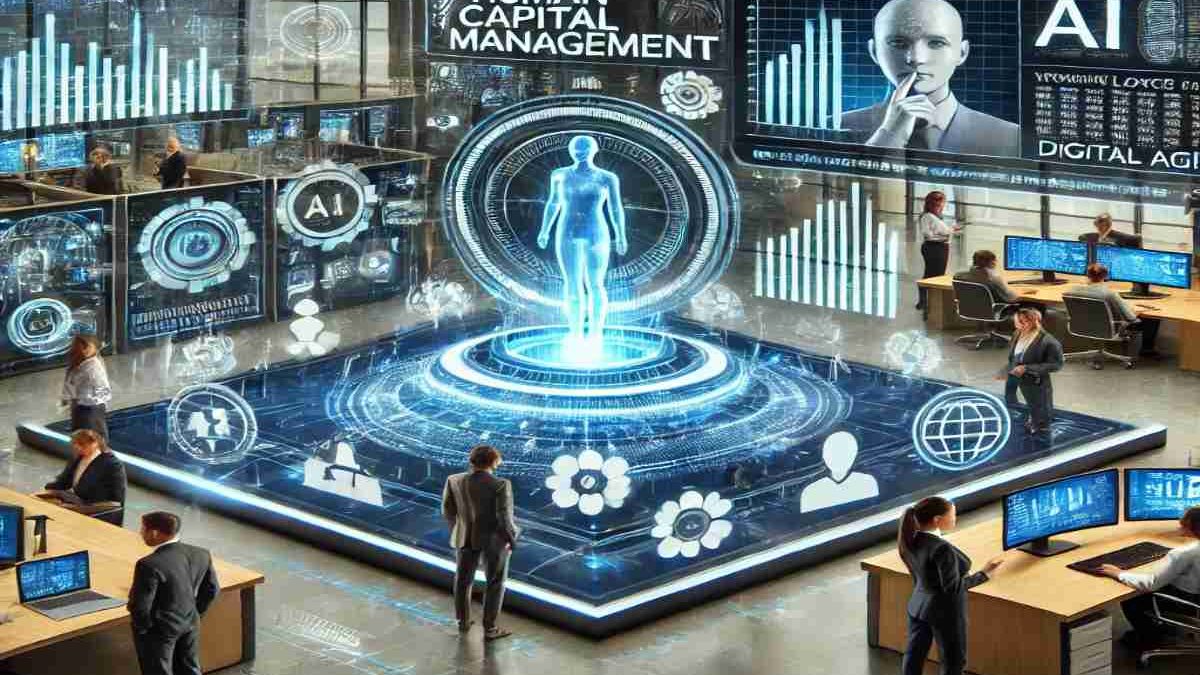Digital transformation is transforming the way organizations manage and develop their workforce. Integrating technology in business operations transforms human capital management from payroll and benefits administration to a dynamic process involving advanced data analytics, artificial intelligence, and cloud-based solutions. Digital tools enable businesses to streamline recruitment, personalize employee development, and enhance performance management more efficiently. These technologies provide valuable insights, enabling informed decisions and optimizing workforce productivity and engagement. The digital age also allows a more flexible workforce, with remote work and virtual collaboration becoming the norm. Organizations must adapt by adopting innovative strategies that support employee well-being and company goals. Staying ahead of technological trends is crucial for future success.
In today’s fast-paced and ever-evolving business environment, comprehending human capital management (HCM) nuances has become indispensable for organizations aiming to thrive. As companies pivot to new business models, the focus on workforce management becomes increasingly critical to driving performance, innovation, and sustainability. HCM encompasses a broad spectrum of activities, including recruitment, employee welfare, compensation, and professional development, which are tailored to meet the organization’s objectives efficiently.
This article discusses the importance of a strategic approach in human capital management (HCM) to boost productivity and align the workforce with company goals. It highlights the need for businesses to adapt to modern demands and explores the transformation of HCM and its promising prospects.
Table of Contents
The Evolution of Workforce Dynamics
The workforce dynamics have seen profound changes over the past few decades. The rise of remote work technologies and the gig economy has challenged traditional employment models and necessitated a reevaluation of conventional workforce strategies. Previously, most companies adhered to rigid work arrangements, but today, there is an increasing shift towards flexible working conditions to accommodate employees’ changing preferences.
The focus on diversity and inclusion prompts companies to reevaluate their workforce policies to create an environment that values diverse experiences and perspectives. As companies adapt their strategies to these new dynamics, they not only accommodate the needs of their employees but also facilitate a more innovative and resilient workforce.
The Role of Technology in Human Capital Management
Technology is revolutionizing human capital management. Thanks to advanced HR information systems, artificial intelligence, and data analytics, companies can optimize recruitment, training, and employee retention while fostering a workplace aligned with the organization’s broader goals.
By incorporating these tools, companies can gain valuable insights into workforce demographics, enabling them to tailor strategies that meet employee needs while improving efficiency. Technology’s role extends beyond mere process automation; it facilitates a culture of continuous improvement and data-driven decision-making, essential for maintaining a competitive edge in the marketplace.
Challenges in Modern Human Capital Practices
Companies face challenges in managing human capital, particularly talent retention, due to a skill gap and rapid technological advancements. As competition intensifies, organizations must create an attractive employment experience to attract and retain top talent.
Furthermore, the urgency to continually upskill employees presents both challenges and opportunities. Companies must foster a culture that supports lifelong learning by providing the necessary tools and platforms for continuous professional development. By doing so, they address skill gaps effectively while encouraging employees to stay long-term, thus curtailing high turnover rates.
Innovative Strategies for Enhancing Workforce Engagement
Enhancing workforce engagement remains a top priority for organizations looking to drive success. Adopting industry pioneers’ strategies, such as flexible work arrangements, robust recognition programs, and open communication channels, can significantly boost employee engagement, fostering a sense of value and inspiration within companies.
Organizations that invest in creating a conducive and engaging work environment often witness a boost in employee morale, productivity, and loyalty. Companies cultivate thriving workplaces that generate sustained success by focusing on personal growth opportunities, feedback systems, and meaningful recognition.
The Global Perspective on Human Capital Management
Human capital management strategies differ significantly globally, driven by cultural, economic, and regulatory factors. For example, some countries prioritize work-life balance, adopting policies that support flexible working hours, while others emphasize high productivity with more structured working arrangements.
Understanding these nuances allows global companies to tailor their HCM approaches to the local context, ensuring they are practical and respectful of cultural norms and regulatory requirements. This understanding is crucial for ensuring employee satisfaction and alignment with corporate goals across international borders.
Future Trends to Watch
Looking ahead, the future of HCM unveils exciting trends set to redefine how organizations operate. Integrating AI-driven recruitment processes promises to enhance candidate sourcing, improving the quality of hires while reducing time and cost. Additionally, personalized employee development plans, facilitated by big data, will allow organizations to tailor training and development activities to individual needs, enhancing performance and job satisfaction.
The emergence of immersive technologies such as augmented reality (AR) and virtual reality (VR) presents transformative possibilities for training and collaborative work environments. These trends signal a shift towards more adaptive, technology-driven approaches to workforce management, crucial for organizations seeking a competitive advantage in an increasingly digital world.
Conclusion: Preparing for the Future
In conclusion, the landscape of human capital management is continuously evolving. For organizations to succeed, they must stay abreast of technological advances and adapt to the shifting workforce dynamics embraced globally. Companies prioritizing adaptability, upskilling, and employee engagement will survive and thrive as they confront future challenges.
Adopting emerging trends and technologies can help organizations develop a resilient workforce for long-term success in the ever-changing global economy. The journey towards future-proofing human capital management is one of proactive adaptation, ensuring that businesses remain forward-looking and strategically agile.


